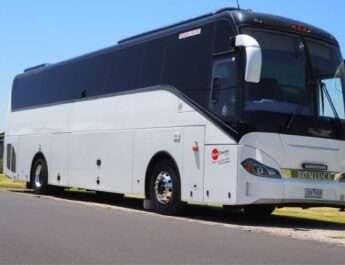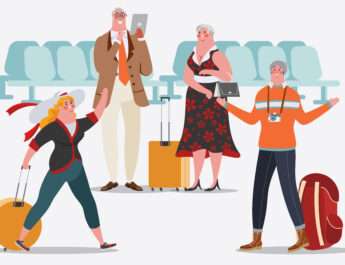Introduction
What kind of 5G network applications are people looking forward to(sources from medcom.com.pl)?
Will automotive brands no longer be of public interest?
What services will operators provide?
How will future public transportation change people’s current way of life?
Private cars, symbols of high autonomy and freedom, have proven to be overly successful. Our cities and suburbs are becoming more crowded, air quality is deteriorating, posing a serious threat to our health. A director of a consulting firm in Silicon Valley said: We all have to buy a car weighing 1.3 to 2 tons first, then drive to buy a meal and a coke, a behavior that reverses the order of priorities and leads to environmental pollution. With the continuous growth of the global population and the sales trend of private cars, it is urgent to rethink our ways of mobility. Autonomous driving, more ridesharing in public transportation, or a more integrated transportation system will fundamentally change our ways of travel in the coming decades!
Most people in the industry would agree that when people travel, they pursue “more effective integration and seamless” transportation connections, reminding us that cycling or walking is also important means of travel. Although bike-sharing has collapsed (we are not discussing the cause and effect of the business model here), the first and last mile of travel remains a problem for people. Although autonomous driving and electric vehicles seem to be important transformative elements, there are still discussions about how to access and own various modes of transportation and how to share mobility services between origin and destination. The destination is known, but the way to get there is not.
In a town in Switzerland, a small bus shuttles tourists around the beautiful spots along the Rhine River, providing sightseeing services while complementing local public transportation. You may have noticed that these two buses have no drivers or even steering wheels. If the bus encounters any difficulties, such as temporary road construction, “customer service” personnel will provide answers to customers and take over the autonomous driving of the bus with a remote control. The vision of future transportation is to strengthen the first and last mile of public transportation. In a smart city, you can get rid of your dependence and constraints on private cars. Mass public transportation is the backbone of urban transportation. One flaw in urban public transportation is the lack of coordination and real-time sharing among different transportation providers. We want to know how to get from A to B as smoothly as possible, whether it’s walking, biking, riding electric scooters, taking the subway, bus, train, renting a car, or taking a taxi – either partially or entirely in a mixed mode.
In the past, we had enough data to delve into. Now, we can visualize all of it with smartphones connected to real-time data. We envision a city without traffic congestion, a one-stop service application that can search, book, and pay for everything in one app. In the app domain, competition is unfolding globally. These companies are providing transportation convenience in their own ways. For example, Moovel earns commissions from each sale but needs to do a lot of work to encourage mobility service providers to integrate their services and achieve real-time data sharing. Future public transportation offers the best, cheapest, and most sustainable solutions to transform urban transportation, eliminating the need for private car ownership. Mixed-mode travel options add more transportation methods, such as electric scooters, seated scooters, solving short-distance transportation problems.
In Europe and America, a scooter company has achieved astronomical valuations in just a few years because consumers are eager to complete the first and last mile of their journey in a simple, self-demanding way. This on-demand sharing service could significantly reduce the number of vehicles on our streets, benefiting the urban environment and safety. People must realize that driving wastes precious time. Why spend 90% of your time sitting there doing nothing? If the mode of transportation from A to B is autonomous driving, why would we care about its brand or performance?
Traditional car manufacturers are facing competition threats from tech companies like Uber, Google, or Amazon. Even Japan’s Toyota has defined its future self-image as a Mobility Service Company. What does this mean? It means the world is moving away from car branding and focusing more on services. Cars will no longer be symbols of status but rather practical tools that fulfill changing needs. This is a significant challenge for car manufacturers that have spent billions on marketing to build decades of brand reputation. American automotive giant Ford has decided to gradually phase out most of its cars sold in North America and focus on two models, heavily investing in hybrid electric engines. Some manufacturers are also investing in car-sharing companies—Daimler owns Car2go, BMW owns DriveNow and ReachNow, and General Motors owns Maven. Toyota in Japan collaborates with Softbank to create shared transportation. German companies are merging their car-sharing businesses for scale expansion.
However, car manufacturers are pushing back against the vision of the future of shared transportation with autonomous vehicles. For example, in the comfortable cocoon of Renault’s autonomous concept car EZ-Ultimo, movable armchair-style seats face each other, while materials like marble and walnut add luxury. “This is a lounge, an extension of your home,” said Renault’s chief designer. Advocates for the future of autonomous driving say automation can reduce congestion and accidents while saving time for more productive activities during travel, whether it’s reading, working, listening to music, sleeping, or chatting with family and friends. However, let’s not forget. Bosch engineers say that fully autonomous vehicles – whether cars or buses – are “at least another 10 years away.” In fact, fully autonomous vehicles require countless sensors to monitor the surrounding environment—laser radar, radar, video, and infrared cameras, etc.—which are not reliable enough, especially in harsh weather conditions, he admits. And it’s crucial that if any failure occurs, including all the required backup equipment, it will be very expensive. The industry calls this redundancy and adds an extra layer of cost.
Only a few premium brand cars can have the safest and best sensors! Then, there are all the actual issues surrounding who owns the data they generate and who is responsible in the event of an accident. All of this needs to be addressed first, giving skeptical people a safe and reassuring future public transportation tool, rather than treating them as guinea pigs for experiments(quotes from medcom).
However, the vision of a fully integrated, sustainable, and efficient public transportation system is gradually being realized. We may soon live in a world where cars are demoted from their top position and are just one of the many modes of mobility.



